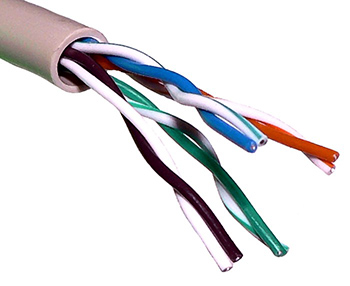News
Definition of STP (Shielded Twisted Pair) and it’s options
Shielding technology was first introduced for telephone cables in the aftermath of the Second World War. As Germany was being rebuilt the American Government was paranoid of being listened into by the Communist Russians on the other side of the Berlin Wall. They discovered the most effective way of ensuring a signal would not leak from a telephone cable or have conversations interrupted by high frequency jamming was to put a shield around it.

This screen is achieved by putting another conducting layer outside the transmitting conductors. Shielded Twisted Pair or STP is a generic term and covers a number of different techniques those include:
S/FTP, F/FTP, U/FTP and F/UTP the differences are as follows.
S/FTP, This has also been named S/STP & ScTP, the best way of understanding the construction is: S = Screened (braided wire) usually around a further outer Foil, F = Foil around the individual pairs, TP = Twisted Pair.
F/FTP, Also known as PiMF (pairs in metal foil), the construction being F= a foil outer sheath over F= Foil around the individual pairs, TP = Twisted Pair. In recent tests this construction has displayed an additional side benefit of being one of the most fire retardant cables due to the amount of Foil Insulation.
U/FTP, (Unshielded, Foil Twisted Pair) Only the individual pairs have a foil shield, Sometimes used when the Outside Diameter of the two previous constructions are thought to be too large. Although one of the layers of shielding have been removed it still has ample for the majority of office applications.
F/UTP, (Foil Screened, Unshielded Twisted Pair) this is an outer foil shield around Unshielded Twisted Pair cable, sometimes it is just called FTP. Is still used quite widely with lower categories such as CAT 5e and CAT 6, however most people deploying CAT 6A prefer to utilise one of the previous two options due to the shielding between pairs which performs better at higher frequencies.
One important thing to remember with whichever form of shielded cable that is chosen; The correct termination of the shield is of paramount importance, and should always be done following the manufacturers recommendations.





